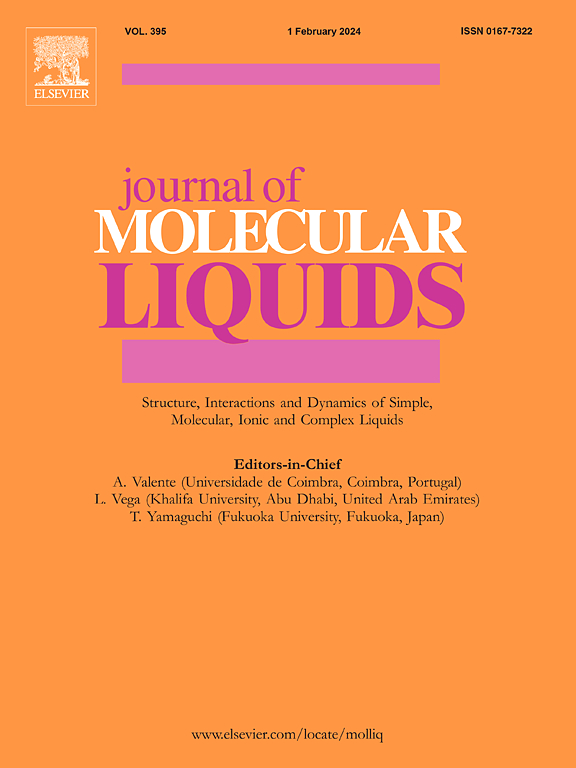Molecular simulation-assisted extraction of biomolecules using organic solvents, ionic liquids, and deep eutectic solvents: A review
IF 5.3
2区 化学
Q2 CHEMISTRY, PHYSICAL
引用次数: 0
Abstract
Extraction biomolecules using organic solvents, ionic liquids (ILs), and deep eutectic solvents (DESs) have been of significant interest due to their unique properties and potential for enhancing extraction efficiency. However, the solvent selection before extraction is the most basic and time-consuming process. On the other hand, comprehending the extraction mechanism at the molecular level is crucial for the design and application of extraction systems. Molecular simulation-assisted extraction has emerged as a cutting-edge technique. Herein, we present the recent progress of the molecular simulation-assisted extraction of biomolecules using different solvents, comprehensively detailing the analysis of the properties of target biomolecules, the physicochemical properties of solvents, and the interaction between biomolecules and solvents. First, Hirshfeld surface analysis, molecular electrostatic potential surface and molecular polarity index could be used to predict the polarity and action site of biomolecules. Then, the molecular simulation could provide data on the thermodynamic and kinetic properties of various solvents, including dissolving capacity, distribution coefficient, selectivity, viscosity, and surface tension. Moreover, quantum chemistry and molecular dynamics used to analyze the interaction between biomolecules and solvents were discussed. Finally, the challenges and future prospects of molecular simulation-assisted extraction of biomolecules are provided.

求助全文
约1分钟内获得全文
求助全文
来源期刊

Journal of Molecular Liquids
化学-物理:原子、分子和化学物理
CiteScore
10.30
自引率
16.70%
发文量
2597
审稿时长
78 days
期刊介绍:
The journal includes papers in the following areas:
– Simple organic liquids and mixtures
– Ionic liquids
– Surfactant solutions (including micelles and vesicles) and liquid interfaces
– Colloidal solutions and nanoparticles
– Thermotropic and lyotropic liquid crystals
– Ferrofluids
– Water, aqueous solutions and other hydrogen-bonded liquids
– Lubricants, polymer solutions and melts
– Molten metals and salts
– Phase transitions and critical phenomena in liquids and confined fluids
– Self assembly in complex liquids.– Biomolecules in solution
The emphasis is on the molecular (or microscopic) understanding of particular liquids or liquid systems, especially concerning structure, dynamics and intermolecular forces. The experimental techniques used may include:
– Conventional spectroscopy (mid-IR and far-IR, Raman, NMR, etc.)
– Non-linear optics and time resolved spectroscopy (psec, fsec, asec, ISRS, etc.)
– Light scattering (Rayleigh, Brillouin, PCS, etc.)
– Dielectric relaxation
– X-ray and neutron scattering and diffraction.
Experimental studies, computer simulations (MD or MC) and analytical theory will be considered for publication; papers just reporting experimental results that do not contribute to the understanding of the fundamentals of molecular and ionic liquids will not be accepted. Only papers of a non-routine nature and advancing the field will be considered for publication.
 求助内容:
求助内容: 应助结果提醒方式:
应助结果提醒方式:


